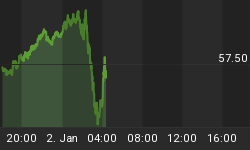The Obama Administration waited until the wee hours of September 11th, 2009 to quietly inform Americans of its decision to slap new tariffs against low-end tire imports from China. Coming only days before this week's important G-20 meeting in Pittsburgh, an occasion when China will likely renew its campaign to push the world towards a post-dollar economy, the timing of the announcement seems particularly ill-advised. To be frank, it is like waving a red flag in front of a bull. It is not surprising that China instantly retaliated with their own duties on U.S. auto parts and agricultural products.
The Administration's action could be simply explained by the president's need to mollify the trade unions that played a big role in his ascendancy to power. However, the equation may be more complicated.
Despite the mindless chortling of those who believe that the United States will experience a "jobless recovery," employment holds the key to a healthy economy. It is also a potent political issue. In particular, labor unions subscribe to the idea that protectionism, in the form of trade barriers, preserves domestic jobs.
It is increasingly apparent that America and China are competing partners in a delicate and momentous power struggle, held together, temporarily, by mutual interest. America is the great consumer of the world; China, the great producer.
As a result of this relationship, America's manufacturing base has been eroded severely, perhaps even mortally. This industrial destitution has been a key factor in the run up of American unemployment, now approaching twenty percent. Although this number is roughly twice the published official unemployment level of some ten percent, it is in fact a truer indication of the health of the labor market.
The difference is due to the fact that the official unemployment figures exclude all those who have given up searching for full-time employment or are only able to find part-time work. No such pass was given to out-of-luck workers during the Great Depression or the 'stagflation' days of the 1970s. Unfortunately, this propaganda campaign to hide the true level of unemployment has been a smashing success.
Critics of protectionism rightly argue that barriers that would result from a trade war would negate any gains made by the intent to shield domestic industries. As such, they see this policy as a foolish confrontation with China. But bear in mind that these new tariffs come at a time of continued dollar weakness. Perhaps the Administration has come to realize that the retaliatory barriers enacted by the Chinese will be overcome by the increasing competitiveness afforded by a weakening dollar? Perhaps this gives them the confidence to roll the dice.
By making U.S. products more competitive overseas, a weaker dollar would help American exports. From the Administration's perspective, a debased dollar also offers the U.S. other benefits, including reducing the real value of all debts denominated in U.S. dollars. As America now has total debts of some $58 trillion, a devaluation of some 30 percent equates to a debt reduction of 17.4 trillion... a handsome saving!
It is quite possible the Obama Administration is overtly unveiling a new policy of increased trade protection while covertly pursuing a policy of gradual dollar debasement. In so doing, it hopes to both reduce the burden of America's outstanding foreign debts and protect American manufacturing.
But if you let your own currency go up in flames, you'll be the first to get burned. This strategy, though less suicidal than many presume, still ignores its biggest victim: average Americans. While Obama claims credit for a shrinking debt and growing exports, Americans will pay the price through rising costs for everything from tires to milk, continued joblessness, and depleted savings.
For a more in-depth analysis of our financial problems and the inherent dangers they pose for the U.S. economy and U.S. dollar, read Peter Schiff's 2007 bestseller "Crash Proof: How to Profit from the Coming Economic Collapse" and his newest release "The Little Book of Bull Moves in Bear Markets." Click here to learn more.
More importantly, don't let the great deals pass you by. Get an inside view of Peter's playbook with his new Special Report, "Peter Schiff's Five Favorite Investment Choices for the Next Five Years." Click here to dowload the report for free. You can find more free services for global investors, and learn about the Euro Pacific advantage, at www.europac.net.















